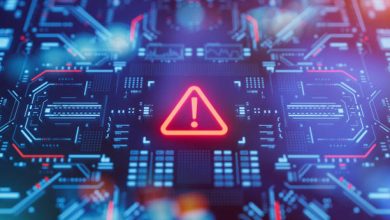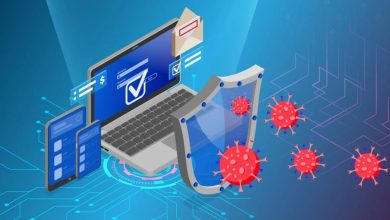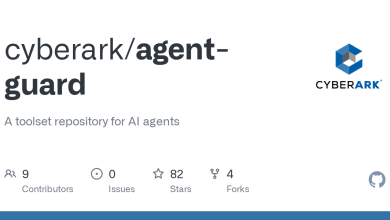Securing Singapore’s Smart City Future: A Collaborative Path to Cyber Resilient Urban Innovation

Attributed to: Teong Eng Guan, Regional Director, Southeast Asia & Korea, Check Point Software Technologies
As smart cities become more prevalent worldwide, cities like Singapore are leading the charge by integrating advanced digital infrastructure to improve urban life. However, alongside these innovations, the cyber security landscape is rapidly evolving. Addressing these new threats is crucial to ensuring the safety, resilience, and sustainability of future urban ecosystems.
The global development of Smart Cities is on a steady growth trajectory. According to Statistica, the Smart Cities market worldwide is projected to reach US$72.52billion in revenue by 2024, fuelled by government support for the economic and sustainability advantages these technologies bring. With global players such as Singapore, South Korea, China, and Germany each investing heavily in smart city technologies, the competition to build secure, efficient urban spaces is intensifying.
In Singapore, the Smart Nation 2.0 initiative aims to transform urban living, improving Singaporean’s lives through building a seamless, interconnected, data-driven city. However, integrating advanced technologies—such as Internet of Things (IoT), artificial intelligence (AI), and 5G brings potential vulnerabilities to critical infrastructure opens critical infrastructure such as water distribution, transportation and emergency response systems— to potential cyber threats. Addressing these vulnerabilities will be crucial in ensuring the operational safety and economic stability of Singapore’s smart city framework.
Key Cyber Threats for Smart Cities like Singapore
- Ransomware Attacks on Critical Infrastructure: Ransomware attacks target city infrastructure are increasing globally. With the rise of digital connectivity in urban management, ransomware attacks on essential infrastructure are becoming increasingly frequent and sophisticated. For cities like Singapore, which rely heavily on digital services, such attacks could disrupt essential functions, impacting everything from transportation to public health. In many cases, cybercriminals often demand large ransom payments to restore access, leaving governments with the difficult choice of either paying or risking prolonged service outages. Beyond financial costs, the real-life impacts can be severe, potentially disrupting transportation healthcare, and emergency services.
- Attacks on Public Safety Systems: Emergency alert systems, video surveillance, and gunshot detection technologies are crucial for maintaining public safety in smart cities, but they are also prime targets for cyberattacks. In Singapore, these systems are integral to national security, and any breach could delay emergency responses or cause public panic. According to a 2020 survey of cyber security experts in a white paper by UC Berkeley Centre for Long-Term Cybersecurity, emergency alert systems were ranked as the most vulnerable among Smart City technologies. Cybercriminals tampering with traffic signals or emergency response systems could lead to accidents, gridlock, and further vulnerabilities in crisis situations.
- Data Breaches and Privacy Concerns: Smart cities gather vast amounts of data on citizens, from transportation habits to personal health information. With the increasing use of smart sensors, cameras, and IoT devices, the potential for data breaches becomes a significant concern. While Singapore’s Personal Data Protection Act (PDPA)enforces stringent controls on data use, the rapid growth of IoT devices and smart sensors raises new challenges for data security. A successful breach could expose sensitive personal information, leading to identity theft, fraud, and eroding public trust in Singapore’s digital initiatives. This could hinder the adoption of smart technologies, slowing down progress in creating sustainable, data-driven solutions for the city.
- Water Supply and Sanitation Vulnerabilities: Cyberattacks on water supply infrastructure are increasingly concerning, as demonstrated by the 2021 attempt to alter the chemical levels in Oldsmar, Florida’s water system. In Singapore, where advanced smart water systems are being deployed, similar vulnerabilities could pose a significant risk. A compromised water supply system could disrupt access to clean water, affecting public health and economic activities. In a digitally interconnected urban landscape, these types of attacks have the potential to create widespread disruptions, impacting essential services and eroding public confidence in smart city infrastructure.
Preparing for the Cyber security Risks of Tomorrow
To ensure that smart city advancements remain secure, a comprehensive cyber security approach is essential. Governments, private sectors, and citizens must all contribute to building a cyber-resilient urban ecosystem. Here are several strategies that can help protect Smart Cities infrastructure:
- Adopting Secure-by-Design Principles: Cities must adopt a secure-by-design approach to technology implementation, ensuring that cyber security is integrated into the development and deployment of Smart City technologies from the outset. This includes conducting thorough risk assessments and incorporating encryption, multi-factor authentication, and regular software updates to safeguard against potential vulnerabilities.
- Collaboration Across Sectors: Protecting Smart Cities requires collaboration between public and private sectors. Government agencies, technology providers, and cybersecurity firms must work together to develop and implement comprehensive security frameworks. This includes sharing threat intelligence and establishing clear protocols for responding to cyber incidents.
- Investing in Cyber security Talent: As the demand for cyber security experts grows, cities must invest in training and retaining skilled professionals who can manage and mitigate cyber risks. Educational institutions and businesses should collaborate to create cyber security training programs, ensuring that the workforce is equipped to handle the complexities of Smart City infrastructures. The National Cybersecurity Postgraduate Scholarship program is one such initiative, helping to train and retain cybersecurity professionals who can fortify Singapore’s digital resilience.
- Building Citizen Awareness: Citizens must also play a role in protecting smart cities by practicing good cyber hygiene. Public awareness campaigns can educate individuals on how to secure their personal devices, recognise phishing attempts, and report suspicious activities to local authorities. Encouraging citizens to take an active role in cyber security will help create a safer digital environment for everyone.
- Developing Incident Response Plans: Cities must develop robust incident response plans to ensure they can quickly recover from cyberattacks. These plans should include procedures for isolating affected systems, communicating with the public, and coordinating with law enforcement and cyber security experts to mitigate the impact of the attack.
A Path Forward for Smart Cities
The promise of smart cities is an exciting one—improved quality of life, greater efficiency, and more sustainable urban living. However, without addressing the growing cyber security threats, these benefits could be overshadowed by significant risks.
As we build the cities of the future, it is essential to implement proactive measures that protect critical infrastructure, safeguard citizen data, and ensure resilience in the face of cyberattacks. By adopting secure-by-design principles, fostering collaboration, investing in talent, and raising public awareness, we can create Smart Cities that are not only innovative but also safe for all their citizens, paving the way for a future where technology enhances urban life without compromising security.




